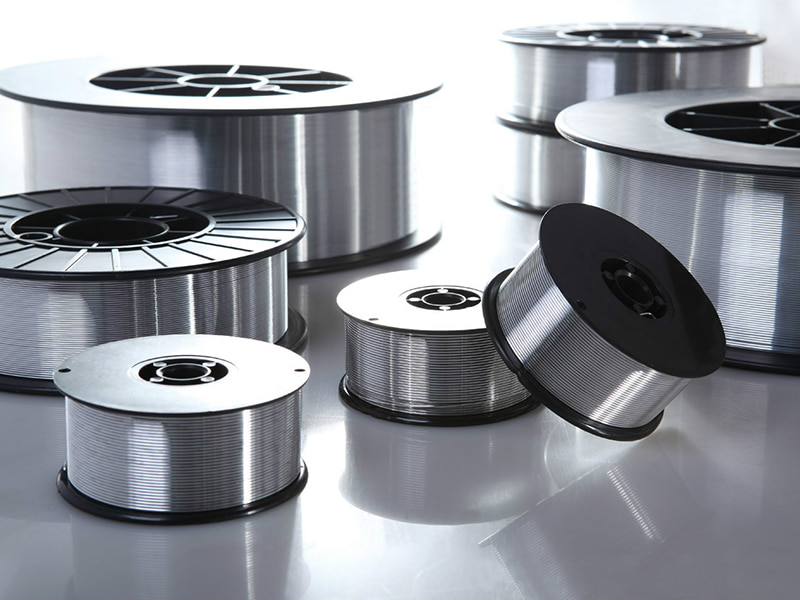What is a good aluminum welding wire?
When it comes to aluminum welding wire, the best choice will depend on the type of project you’re working on. Some welders prefer high-quality alloys, while others are more concerned with their budget. In this article, we’ll cover some basic information about each type of aluminum weld rod available so you can decide what is best for your project needs.
Type of aluminum weld rod
When you're shopping for aluminum welding wire, it's important to know that there are several different types of aluminum weld rod. Each type of weld rod is designed for a specific purpose, so it's important that you choose the right one for your project.
To determine which type of welding wire is best suited for your needs, use the AWS classification system:
A5 - This is an alloyed aluminum with a minimum tensile strength greater than 60 ksi (414 MPa). The A5 designation means that the alloying elements in this particular grade consist primarily of copper and magnesium; however, other trace elements may also be present in small amounts (see Table 1). The A5 type provides good corrosion resistance when used outdoors or in saltwater environments because it contains sufficient amounts of copper--an element known for its excellent anti-corrosion properties.
B6 - This designation covers alloys containing more than 13 percent silicon along with small amounts (<1%) each chromium and titanium; however some high-silicon grades may contain up to 20% silicon by weight (see Table 2). These alloys have high mechanical properties but poor corrosion resistance due to their low chromium content; therefore they are typically not recommended unless they'll be used indoors under controlled conditions where they won't be exposed directly
Classification of weld wire by alloy type
Aluminum weld wire is classified by alloy type, which refers to the specific combination of aluminum and other metals that make up the wire. The most common alloys are:
AA - Pure aluminum (99% pure)
A5 - Zinc-aluminum with 5% zinc
AZ70 - Zinc-aluminum with 70% zinc
Grade designation for aluminum welding wire
When you're shopping for welding wire, you'll come across a variety of different grades. Grade designation refers to the tensile strength and ductility of an aluminum weld rod. Tensile strength is the maximum stress that a metal can withstand before breaking, while ductility is its ability to be stretched or deformed without breaking.
The higher-quality grades have higher tensile strengths and greater ductility than lower ones; this means they're more flexible, which makes them easier to work with during welding processes like butt joints (or "butt welds"), fillet welds, lap joints and groove welds.
Aluminum welding wire types (ANSI, AWS and SAE standards)
You may be wondering what the differences are between these standards. The main difference is that ANSI stands for American National Standards Institute, AWS stands for American Welding Society and SAE stands for Society of Automotive Engineers. These organizations each have their own set of guidelines that they use to determine whether or not a product meets their standards.
The ANSI standard is used in North America while the AWS standard is used worldwide except in Japan where they have their own set of rules called JIS (Japanese Industrial Standard). The final type of welding wire we'll look at here is SAE which stands for Society of Automotive Engineers which makes up most of Europe including Germany and France but not Italy because Italians love Italian things more than any other country so they don't follow any foreign standards whatsoever!


The best aluminum welding wire will depend on your circumstances.
The best aluminum welding wire for your project depends on your circumstances. Factors such as the type of project you're working on, its size and scope, and even the materials with which it will be made can dictate which type of welding wire is best suited for the job. Let's take a look at some examples:
If you are making small objects like jewelry or home decor items out of metal that doesn't require high levels of strength or durability (and therefore won't be subjected to extreme amounts of stress), then medium-gauge solid core aluminum filler rods may work well for your needs.
If instead there is no concern about strength but durability is important--for example, if you want to make something like an outdoor gate--then higher-gauge solid core aluminum filler rods would likely be better suited for this application than their lower-gauge counterparts because they contain more material per inch (which means less chances for breaks).
PREV:Which industries can aluminum welding wire be used for?
NEXT:Why do we need aluminum welding wire
NEXT:Why do we need aluminum welding wire
Related Products
-
 View More
View More
5154 Aluminum Alloy Welding Wire
-
 View More
View More
ER4043 Silicon Aluminum Welding Wire
-
 View More
View More
ER4047 Aluminum Mig Welding Wire
-
 View More
View More
ER5154 Al-Mg Alloy Wire
-
 View More
View More
ER5087 Magnesium Aluminum Welding Wire
-
 View More
View More
Aluminum Welding Wire ER5183
-
 View More
View More
Aluminum Welding Wire ER5356
-
 View More
View More
ER5554 Aluminum Welding Wire
-
 View More
View More
ER5556 Aluminum Welding Wire
-
 View More
View More
ER1100 Aluminum Welding Wire
-
 View More
View More
ER5754 Aluminum Welding Wire
-
 View More
View More
ER2319 Aluminum Welding Wire
 English
English Deutsch
Deutsch
 English
English Deutsch
Deutsch

